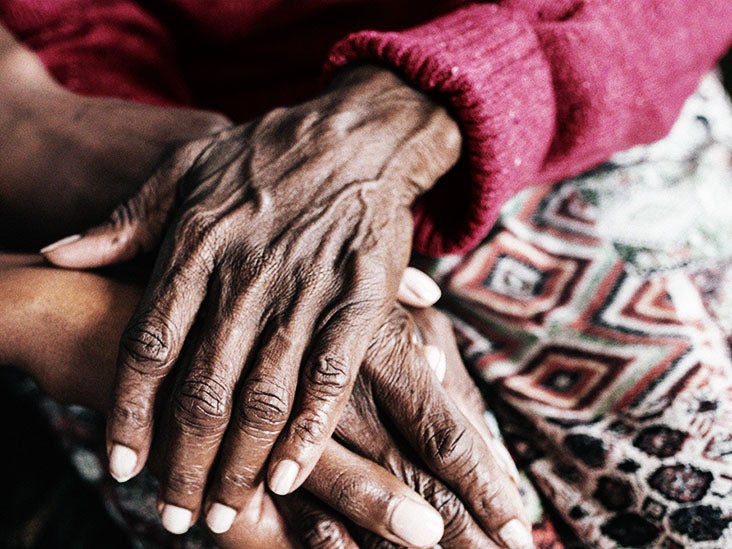Early palliative care for people with non-small cell lung cancer - Medical News Today

Metastatic non-small cell lung cancer (NSCLC) happens when NSCLC spreads to other parts of the body. There is no cure yet, but early treatment and palliative care can improve outcomes for many people.
Palliative care involves people receiving long-term care for a serious illness that has no cure yet. Treatment usually relies on extending life and relieving symptom discomfort. There are many early palliative care options for people with NSCLC, including both emotional and physical care.
This article looks at what treatment options are available, and how beneficial early palliative care can be in improving quality of life.
Palliative care takes a number of different approaches, but focuses on the following areas:
Physical symptoms
- pain
- fatigue
- reduced appetite
- nausea and vomiting
- shortness of breath
- insomnia
- coughing up blood
- constipation
External beam radiation for someone living with NSCLC can improve their quality of life and relieve symptoms such as:
- coughing up blood
- pain
- cough
- shortness of breath
If the cancer causes an obstruction of the person's central airways, the following can improve symptoms:
if the NSCLC metastasizes to the brain, adrenal glands, and liver, or if it compresses the spinal cord or nerve roots, causing pain, an oncologist may recommend:
A palliative care specialist may also recommend further medication to treat:
Emotional care
The palliative care specialists can provide support and resources to help people living with NSCLC and their families cope with the cancer diagnosis and treatment. This may include:
- support from social workers and nurses
dignity therapy - care at home or in the community
- telephone counseling
- education about the condition
- help with medical decision making
Spiritual support
Palliative care specialists may help a person with the condition and their family explore their faith more deeply to find comfort and solace in their values and beliefs, reaching a sense of peace and acceptance about their diagnosis.
Caregiver support
Family and friends looking after a person with metastatic NSCLC may feel overwhelmed by the responsibilities of care. They may also have a difficult time accepting the diagnosis and feel an acute sense of grief when faced with losing their loved one. To help a caregiver cope, palliative care specialists can help provide:
- support
- reassurance
- further services
Practical needs
Some palliative care specialists can coordinate communication among care providers and guide people living with NSCLC and their families through the following concerns that come with end of life care:
- financial
- legal
- insurance
- employment
According to the American Cancer Society, around
Metastatic NSCLC is the term used to describe lung cancer when it spreads beyond the lungs to other body parts, such as the:
- bones
- liver
- brain
Metastasis describes the process by which cancer spreads. A cancer metastasizes when it spreads beyond the:
- lungs
- local tissue
- lymph nodes
There is currently no cure for cancer that metastasizes. Doctors will instead look to treatment that prolongs life and improves the quality of life. Part of this treatment may be early palliative care.
Palliative care focuses on relieving symptoms and improving a person's quality of life.
One older 2010 study suggested that early palliative care for people with advanced cancer is beneficial to their well-being and that of their caregivers. It may improve mood and prolong life. So, the American Society of Clinical Oncology (ASCO) recommends that people with advanced cancer receive offerings of early palliative care options within 8 weeks of their diagnosis.
Learn more about metastatic NSCLC here.
Available treatment for metastatic NCSLC may depend on how far the cancer spreads and what areas it spreads to. It also depends on the overall health of the person with metastatic NSCLC. Since there is no cure yet, treatment will focus on helping the person live longer and treating their symptoms, which
The American Lung Association shares that lung cancer is the leading cause of cancer death in men and women in the United States. More than half of people with lung cancer die within a year of their diagnosis. For people with advanced cancer that spreads to other organs, the 5-year survival rate is between 5% and
There is currently no cure for metastatic NSCLC, but early treatment and palliative care can improve the symptoms and outlook for many people with the condition.
Healthcare professionals can offer palliative care treatment within 8 weeks of the diagnosis. Palliative care may focus on:
- physical symptoms
- emotional and spiritual matters
- financial and practical matters
It is important for palliative care specialists to offer counselling, care, and support to people living with the condition and caregivers. Early palliative care can improve the quality of life of people with metastatic NSCLC.



Comments
Post a Comment